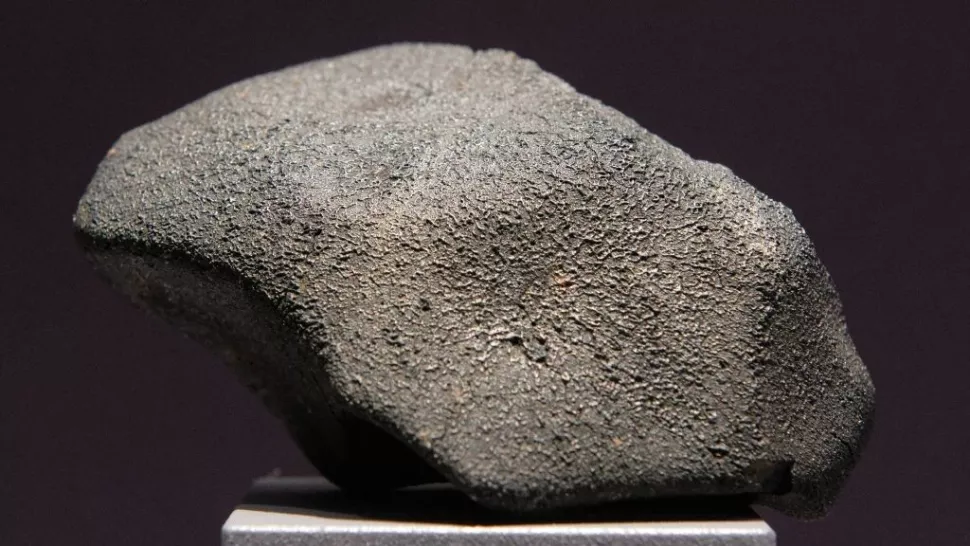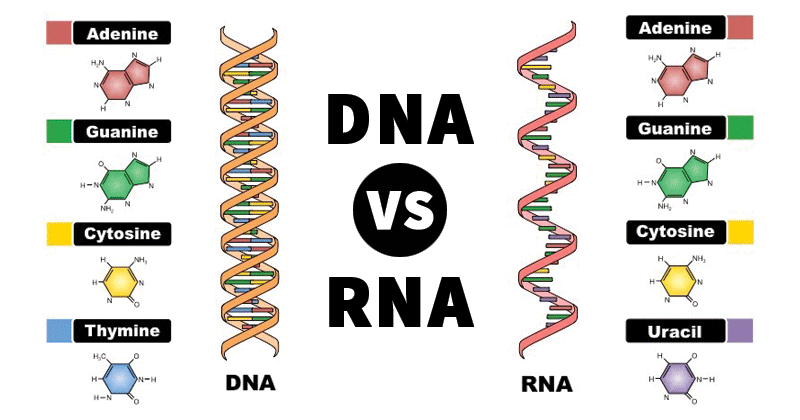Researchers have just discovered the composition of DNA and RNA on stones that come from extraterrestrials. Previously, the scientific world had seen the composition of life on meteorites, but it was not until now that the collection was complete.
The new discovery supports the idea that about 4 billion years ago, a meteor shower brought down the compounds that make up life on Earth, kicking off the biologically prosperous Blue Planet it is today.

The Murchison meteorite contains the basic ingredients that make up life.
Not everyone agrees with the controversial view, nor does it believe that some of the other DNA components are actually of extraterrestrial origin. Chemist, astrophysicist and professor at Boise State University, Michael Callahan thinks meteorites acquire precious substances that come into contact with Earth. Talking to Live Science, Professor Callahan said that “need more researchu” to rule out this possibility. Assuming all the other life ingredients – a group of heterocyclic organic compounds called pyrimidines, come from outer space, the professor still thinks they still have “extremely low density“.
The number of people who agree with Michael Callahan is still large, and the new study published in Nature has not yet convinced the entire scientific community.
The space stone has the element of life
Several components of DNA and RNA have been discovered in meteorites. Notably, among them are nucleobases (the building blocks of nucleic acids), which are the “letters” that make up DNA and RNA. The list of basic nucleobases includes adenine (A), thymine (T), guanine (G), cytosine (C) and uracil (U); with A, G, C, and T forming DNA, while A, G, C, and U make up RNA. But before, science had only discovered A, G and U in meteorites.
New research published in the journal Nature Communications at the end of April confirms the existence of missing components in the carbon-rich meteorites. On meteorites, all three nucleobases are present, cytosine (C), uracil (U) and thymine (T).

According to Professor Oba Yasuhiro from Hokkaido University, “the discovery of cytosine was a big surpriseBecause cytosine is unstable, it easily reacts with water. Although thymine and cytosine have never appeared in meteorites before, many studies have demonstrated that the compound can form in the space environment.
In the lab, the scientists recreated the chemical environment of interstellar space, where clouds of cosmic gas and dust hover at temperatures 10 kelvin (equivalent to -263.15 degrees Celsius); they surround a number of large bodies from which small meteorites break off.
Scientists have synthesized thymine, cytosine and other basic nucleobases under laboratory conditions. They have confirmed that the ingredients for life could theoretically form in interstellar space.

In space, no one heard the sound of life forming.
That is the premise for Japanese scientists to find nucleobases on famous meteorites. In the words of Mr. Callahan, meteorites such as Murchison, Lake Murray and Lake Tagish “All belong to a class of carbonaceous chondrite meteorites, which are known for their high content of organic compounds“.
Scientists have found hydrocarbons and amino acid constituents on the three celestial bodies just mentioned. In previous studies, Professor Oba Yasuhiro and his colleagues had discovered on meteorites a compound called hexamethylenetetramine (HMT), which is an indispensable component of organic molecules.
In the latest study, a team of Japanese scientists also found small amounts of adenine and guanine. The Murchison meteorite contains uracil, it and the Lake Tagish meteorite contain thymine; The Lake Murray meteorite contains isomers of thymine. All meteorites have traces of cytosine, in addition to several other isoforms.
However, it is not possible to confirm that life on Earth comes from space
To confirm the number of nucleobases on the meteorite was of space origin, the team surveyed the soil at the meteorites’ landing sites. Professor Oba Yasuhiro confirmed that the distribution and density of organic matter in the soil is clearly different from the amount in meteorites. Even some isomers are only present on celestial bodies from space, not appearing in the earth. And yet, some strange isomers are very rare on Earth.
Comparing the diversity of nucleobases on celestial bodies and in soil, the researchers concluded that some of the other compounds formed in space. They suggested that the nucleobases were “contribute to the formation of genetic characteristics of early life forms on Earth“.
However, the above assertion is not a conclusion that pleases the whole scientific world. Professor Callahan said that the amount of cytosine (C), uracil (U) and thymine (T) in the soil is higher than in meteorites, so it is not possible to clearly determine how many nucleobases are of outer space origin and how much are from the ground. .

A meteorite preserved at the Smithsonian Museum of Natural History.
In addition, Mr. Callahan said that the Japanese research team had not come up with the biochemical reaction process to produce C, U, T and its isomers. If they can do this, the Japanese team has more evidence to confirm the spatial origin of the nucleobase number.
Although C, U and T do indeed come from space, their densities on meteorites are still very modest, many researchers greatly doubt their ability to support life.
In the future, Professor Oba Yasuhiro and his colleagues will continue to find more nucleobase traces on meteorites that exist in space, thereby eliminating doubts surrounding their origin. Japan’s Hayabusa2 probe has just brought back a rock sample taken on the Ryugu celestial body, perhaps this meteorite sample will answer the big question that Professor Oba is grappling with.
According to LiveScience
